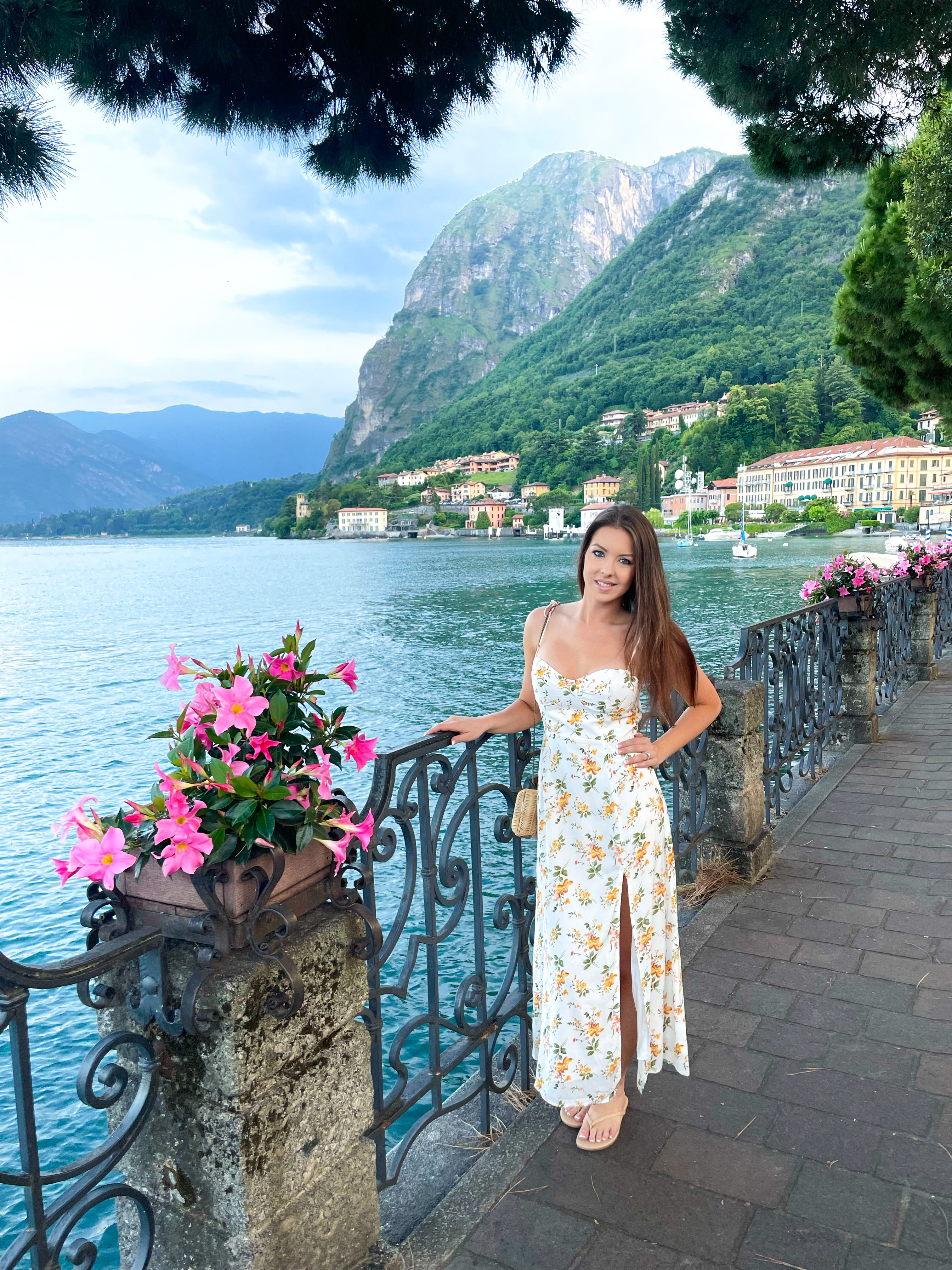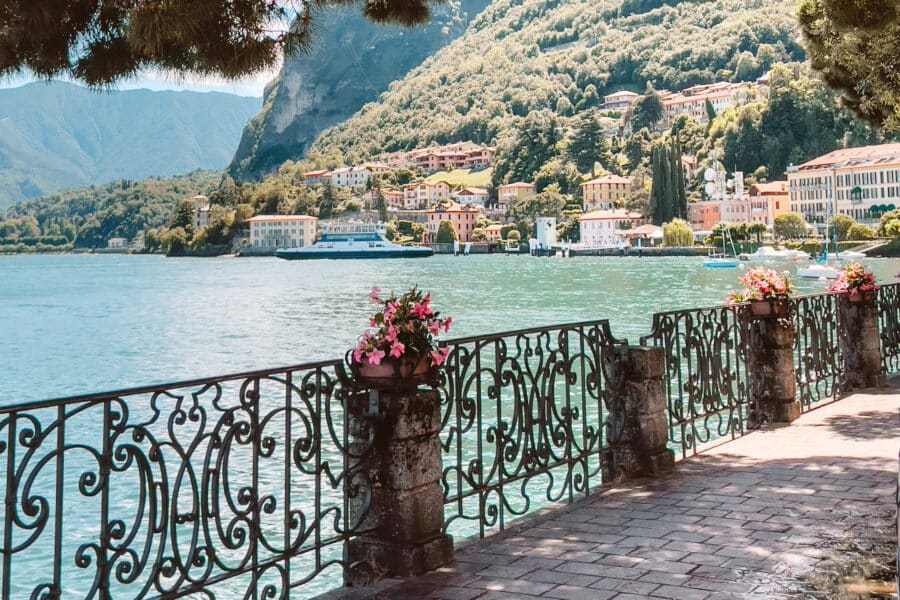[toc]
The Château de Chambord is one of the most well-known and extravagant castles in the Loire Valley. It was primarily used as a hunting lodge to French kings and royalty, but it is home to over 4500 works of art and the famous spiral staircase by da Vinci. As a result, it is on the historical French monument list and a UNESCO World Heritage site.
Chambord is one of the top things to see in the Loire Valley. Sitting on the edge of the Cosson river, the large estate is one of the grandest in France. However, visiting a property like this may be overwhelming due to its grand scale. To help, I’ve created a guide to Château de Chambord. Plan your visit and learn a little about the castle’s history.
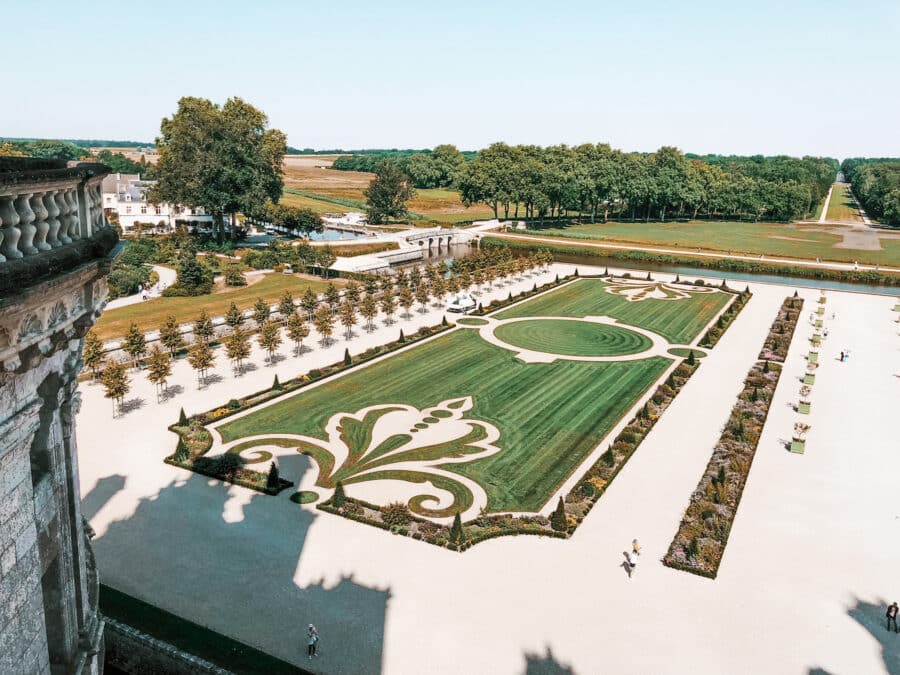
History of Château de Chambord
The château was commissioned by François I in 1519 as a place he could go and show his power and wealth to others. The entire castle was designed around da Vinci’s double spiral staircase in the center. Its primary purpose was as a hunting lodge where he could entertain guests and hunt on the property. In total, the property encompassed 2,500 ejectors of land and forest.
The castle is both incredibly striking and an engineering marvel. The extravagant château is adorned with flying buttresses, large towers, pinnacles, and external staircases, and would regularly host hunting parties of over 600 people. Chambord is the perfect mix of Italian and French design.
It took almost 30 years to construct the castle, with many alterations along the way. Built to show the world how powerful he was, François I invested a fortune in only the best materials and grand designs. The craziest part is that after all the time put into building Chambord, François I is recorded to only have spent a total of 72 days there.
One of the most unique features is the walkways and terraces on the top floors of the castle. There are also more than 280 fireplaces inside the Chambord. What you will not find much of, though, is furniture.
Since Chambord was used as a hunting lodge, furniture was taken to Chambord with the king and his entourage and removed when they left. It would take over 2,000 people to transport the furniture just a few days before taking it apart and removing it again.
FUN FACT: Chambord was used during WWII as a place to stash valuable artwork from the Louvre.
During the reign of Louis XIV, Chambord was finally completed, and the large 1,200-horse stables were built on the land. He was also the king who added the beautiful French garden surrounding the palace.
Unfortunately, the chateau was taken over during the French Revolution, and all the furnishings and items inside were sold. In 1821 the Duc de Bordeaux bought it but never actually visited it as he was exiled from the country.
Chambord was left unattended and neglected for many years until 1930, when the state acquired the property and began extensive renovations. Many of which are still going on today. In 1981, Chambord was listed as a UNESCO World Heritage site.
Of the 440 rooms, only a few have been furnished with pieces curated from the period so that visitors can better understand what they would have liked during the 15th and 17th centuries. Before that, there were little to no permanent furnishings here.

How to Get to Château de Chambord
Chambord is located near the charming town of Blois in the Loire Valley, just a 2-hour drive from Paris. Many people spend a day in the Loire Valley from Paris, but it is worth spending longer if you have time. Here are three of the main ways to get to Chambord from Paris.
Take the Train
There is no direct train or bus to Chambord from Paris. To get to Chambord by train from Paris, take the train from Gare d’Austerlitz to the Blois station. Then, you will have to jump on a bus to Chambord from there. The two buses that run from the town of Blois to Chambord are #118 and #2.
If you want to travel to the Château de Chambord, I would purchase your bus ticket in advance and do some research on schedules. Unfortunately, there are only a couple of routes per day.
Rent a Car
The easiest way to get to Chambord is to join a tour or rent a car. If you are already staying in the Loire Valley, chances are you have a rental car at your disposal.
If you are coming from Paris, the drive will be just under two hours without traffic. From Blois, it is only a short 25-minute drive. Once you reach Chambord, you can park at one of the two parking lots for a few euros.
Driving a car in the Loire Valley is pretty simple, as there is not much traffic. Most people opt to rent a car if staying in the area for a few days. It is a great way to explore the different towns and attractions in the Loire Valley on your own schedule.
If you are coming from Paris, then a tour group may be the better choice, especially if you are not comfortable driving inside the city.
Join a Guided Tour
The best way to visit the Château de Chambord for the day is by joining a tour.
You don’t have to worry about driving or renting a car or ticket. All this is included in the tour price, along with knowledgeable guides. There are a variety of tours available from Paris to the Loire Valley for everyone’s taste.
We opted for the Loire Castles, Wine Tasting, and Lunch Tour. It includes transportation for the day, admission to two of the most famous castles in the area, and lunch with wine tasting at a quaint family-run vineyard. This guide takes you through our day trip to the Loire Valley.
The Full-Day Castle Tour is a good option if you want to explore more castles instead of an afternoon wine tasting. Discover three magical castles, Chenonceau, Chambord, and Amboise. This small-group tour picks you up and drops you back off from Paris. It also includes free admission to the castles and audio guides if requested.
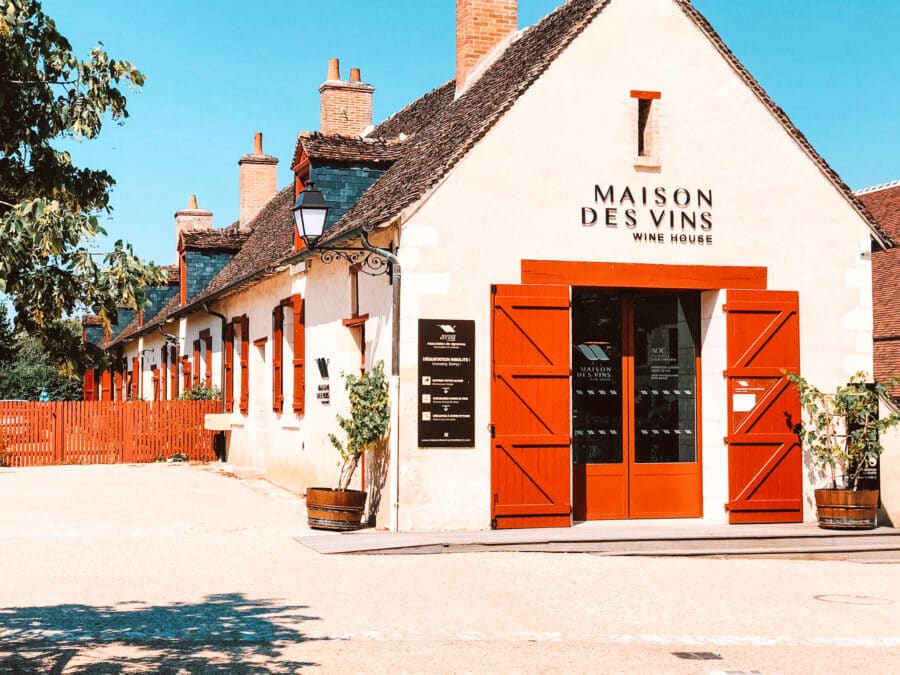
Chambord Visiting Information
Opening Hours
- January 2 to March 27: 9am – 5pm
- March 28 to October 25: 9am – 6pm
- October 26 to December 31: 9am – 5pm
Closed on January 1, November 29, and December 25.
Tickets
Tickets are €14.50 for adults and free for visitors under the age of 18. You pay an additional €6 parking fees when you get there.
Tickets can be purchased onsite, but buying them ahead of time online ensures they won’t get sold out.
If you are part of a tour group, the admission ticket comes as part of your tour.
If you are visiting on your own, I suggest you get there at 9 am when it opens to have the most intimate experience possible. Chambord can get extremely busy, and a limited number of tickets are available to help with this.
Histopad Tour
Chambord recently designed a virtual reality tour at Chambord. You can grab a histopad at Chambord, showing you what the rooms would have looked like in the 16th and 17th centuries. It is a great, interactive option for kids too!

Guide to Château de Chambord
Inside the Château
The Renaissance castle has a large symmetrical structure. The center of the building is a large square with four towers at each corner. The keep is where you will find the most furnished rooms, as this was where most of the action would have been when hunting parties came to Chambord.
In total, there are over 400 rooms (60 of which are open to the public), 282 fireplaces, 83 staircases, and numerous secret passages.
One of the rooms you can explore Is the bedroom of King François I, as well as some sitting rooms with beautiful housing paintings. The majority of the castle is empty, though.
Looking back, although Chambord is impressive in scale, it was not the most practical of structures. With its open windows, massive rooms, and tall ceilings, the hundreds of fireplaces were practically useless for heating the rooms.
Although there is not much to see décor wise, the architecture of Chambord will grab your attention. The castle is intricately decorated from floor to ceiling in moldings and detailed carvings.




You will see many engravings of salamanders, the symbol of the French king, on the ceilings, staircases, and fireplaces. You will also see the letter “F” for François I, who commissioned the construction of Chambord.
The double helix fireplace is the main attraction of the castle’s interior. It was an engineering marvel by Leonardo da Vinci. The two staircases spiral around each other so that someone walking up cannot see another walking down.
Technically, no one knows that the staircase was 100% da Vinci’s. However, it is speculated that he was behind the design as it features his innovative architecture. He is also considered one of the artists behind the château’s creation, along with the Italian architect Domenico da Cortona.
Furthermore, François I admired Leonardo and convinced him to come to France. Another connection is the sketches found by Leonardo of the spiral staircase and other modern elements of the time that are found throughout the castle, which tie him to its design.
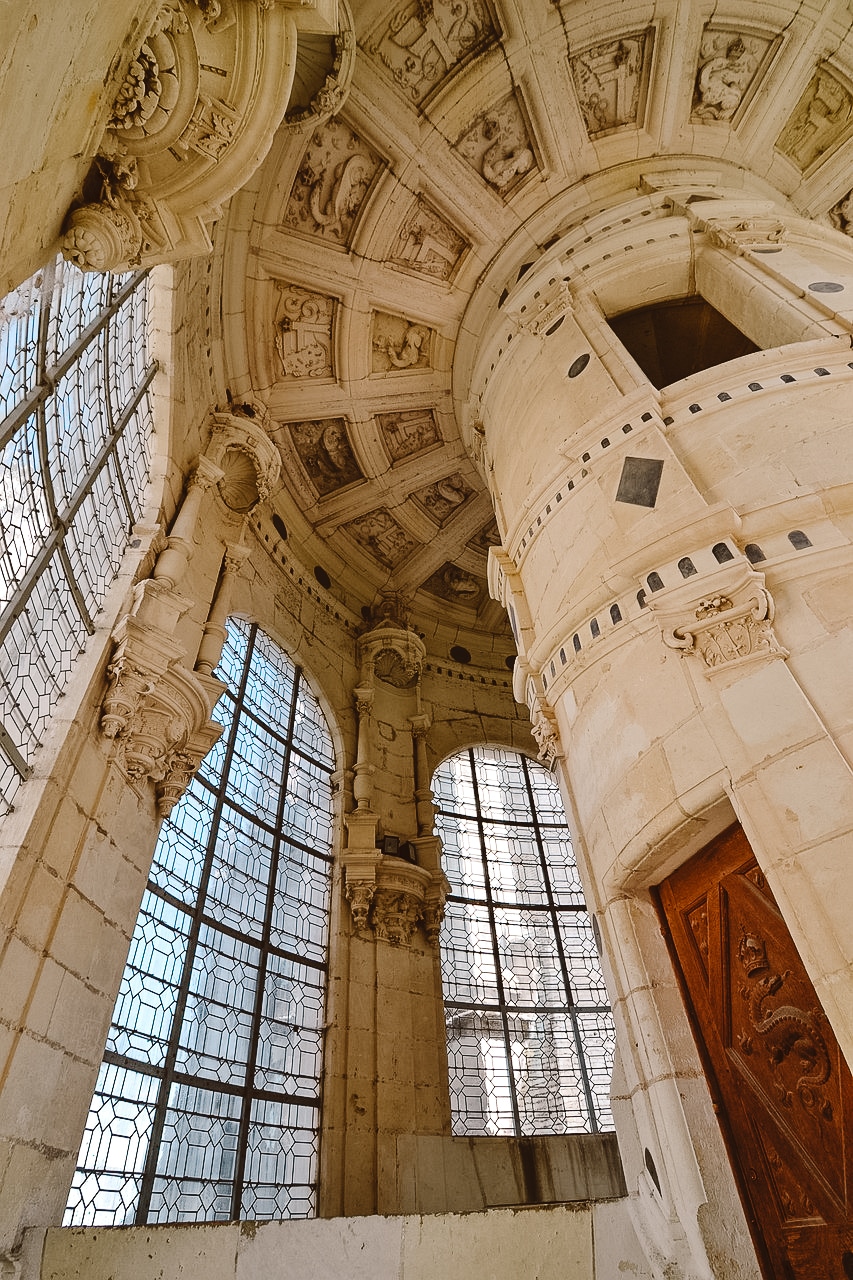
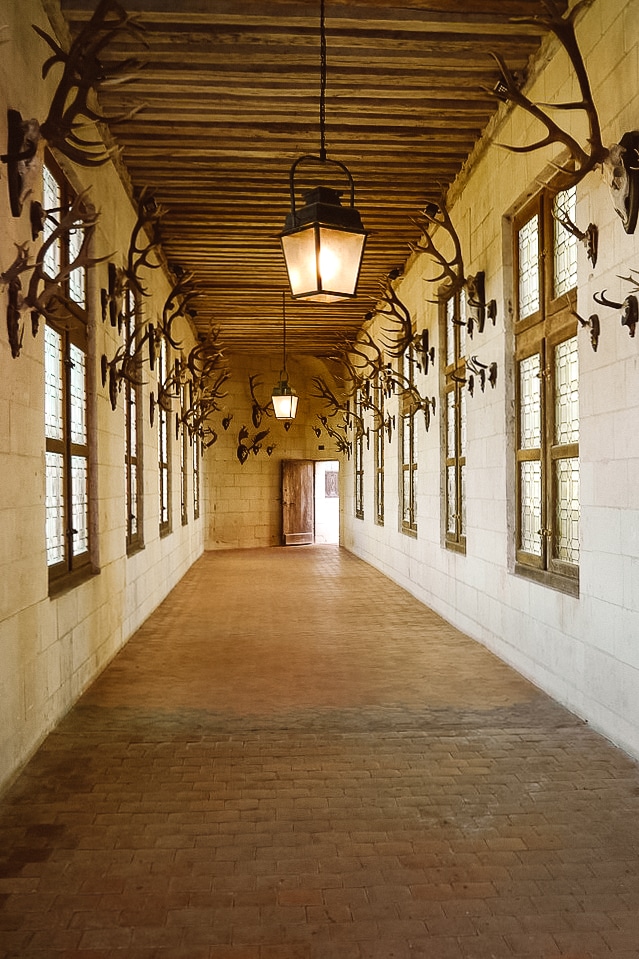

Outside the Château
The best part of Chambord is undoubtedly the views from the top floor. What makes this castle unique is the number of walkways and terraces that wind their way around the castle’s turrets. From the top, you get fabulous views of the French gardens and the Cosson river.
The roof is another great work of art. There are 11 different kinds of towers and three types of chimneys scattered on the rooftop. In the center is the large Lantern Tower that stands 100 feet on the rooftop.
A large lantern is suspended from the top of the tower and lit when the king was there. A unique part is getting close to the pinnacles and decorative accents as you walk around the terrace.
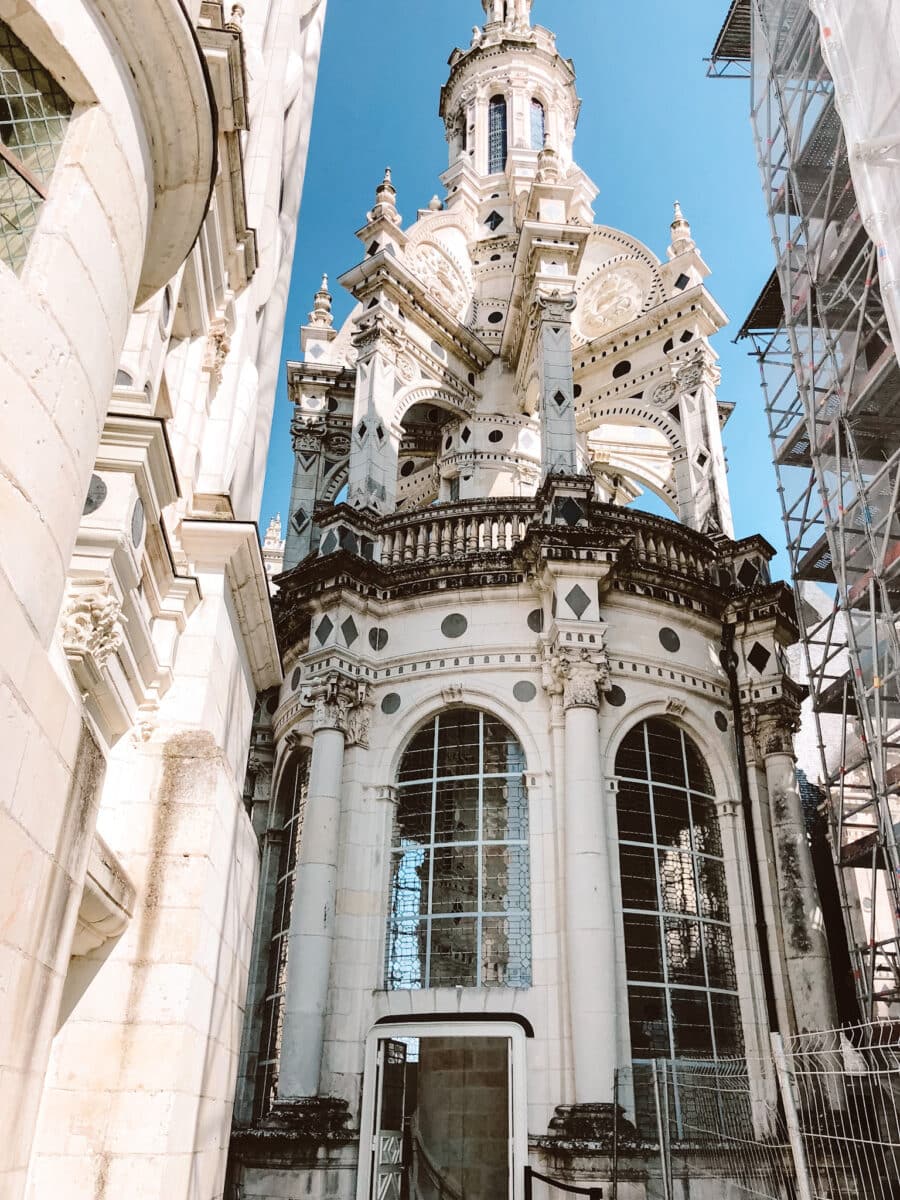
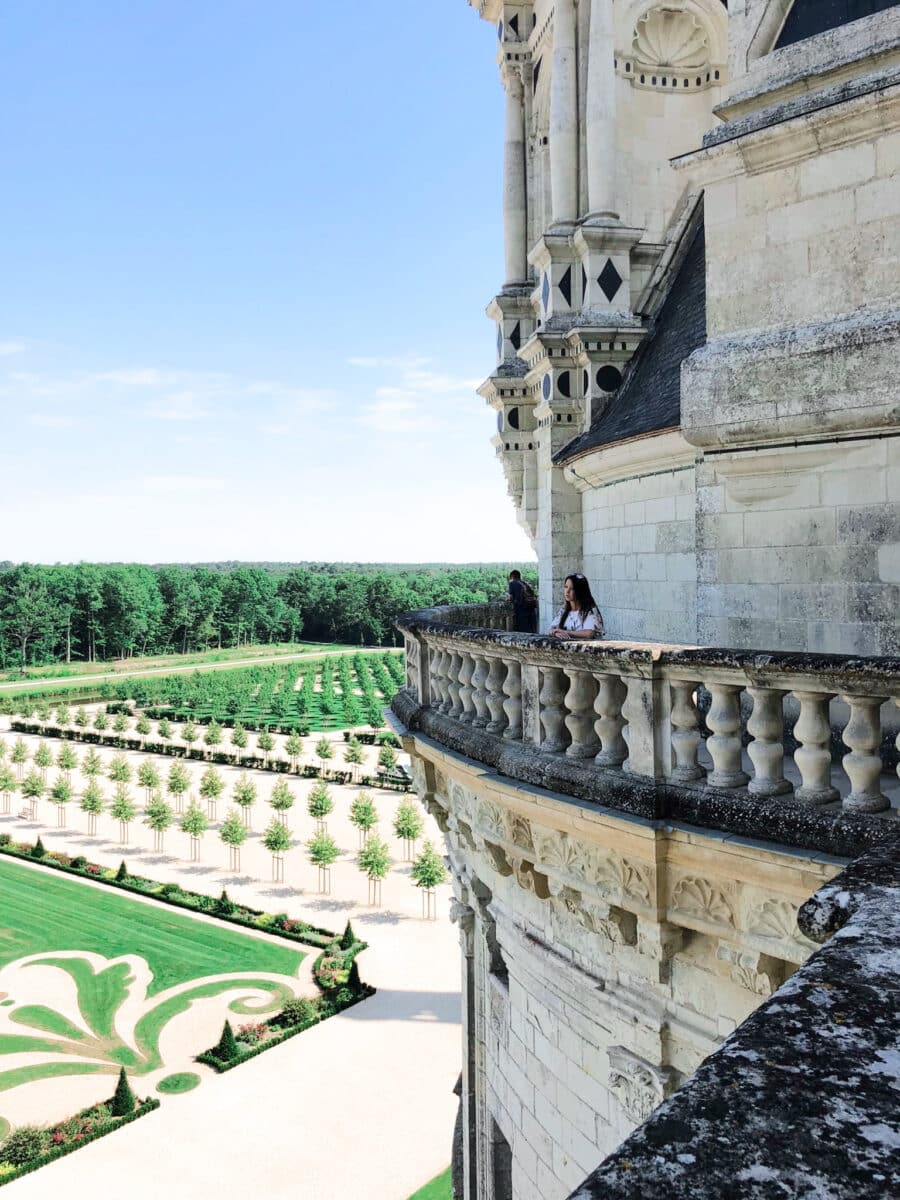
French Gardens
The gardens at Chambord were a massive project. They have over 30,000 plants, bushes, and trees planted, not to mention hundreds of square feet of grass. The 54,000-hectare park is the largest in Europe and a significant part of the castle to explore.
Bike rentals and horseback riding are two unique ways to explore the grounds. Unfortunately, if you join as part of a tour, you will not have time to rent a bike and explore the gardens. However, you will have some time to walk around after you tour the inside of Chambord.
Bike rentals are from 1 – 4 hours and start at €4 for children and €7 for adults. For families, you can also rent a pedal car for €20.
Some other great things to do on the property include walking along the hiking trails or renting a boat. In addition, there is 4 km of walking paths through the forest and around the canal open to the public.
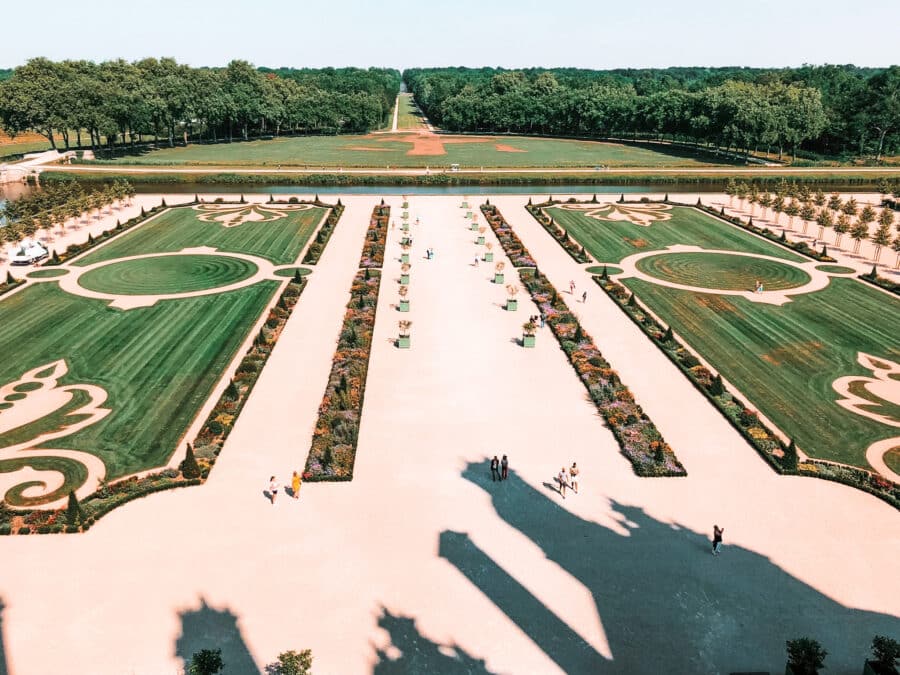
Stay on the Château de Chambord Estate
The Relais de Chambord is a boutique hotel
The Relais de Chambord sits on the 5,440 hector estate next to Château de Chambord. The property offers 25 km of walking trails, 12 km of cycling paths, tennis courts, horseback riding, and carriage rides. You can choose from six different types of rooms, all with amazing views of the property. You can even stay in a boat on the water! Make sure to grab lunch or dinner at their restaurant, le Grand Saint-Michel, with a view of the castle.
Other Nearby Boutique Hotels
Hauts de Loire
Hauts de Loire is by far one of the most picturesque hotels around. Originally used as a hunting lodge, the Hauts de Loire sits on over 180 acres and has everything you need for a relaxing getaway. Choose between a variety of rooms in either the castle or the carriage house. All rooms come with an assortment of amenities. Residents can wander the grounds, relax at the pool, or play tennis. In addition, the hotel has spa services, a fitness club, and a Kids Club. To get the most from your experience, Hauts de Loire has put together some beautiful packages for you. Make sure to check them out before making your reservation!
Location: Bloise | Check Rates
Château de la Bourdaisière
François I built this beautiful hotel. Today it is a hotel equipped with rooms in the main castle, the Pavillion Choiseul, and Clos Bourdaisière. There are many things to do on the property: hiking trails, tennis courts, and an outdoor swimming pool are available for guest use. The property is also home to a tomato conservatory with 700 varieties of tomatoes, a park, and gardens. Make sure to stop by the tea room and ask about their cooking classes during your stay.
Location: Tours | Check Rates
The Domaine de la Tortinière
Within 15 km of the city of Tours lies this luxury hotel. The château is on 15 acres of wooded park with views of the valley and Indre river. Guests can enjoy tennis courts, a heated swimming pool, a massage room, and a billiard room. The Domaine de la Tortinière has an outdoor playground and babysitting services, and the staff is accommodating in recommending kid-friendly activities around the area.
Location: Tours | Check Rates
Château de Perreux | Amboise
Located only 2 km from Amboise, this boutique castle offers a quiet retreat while being close to local restaurants and attractions. The owners have done a great job restoring the property while keeping the finishes authentic. You can choose four types of rooms, all with elevator access and air conditioning. In addition, Château de Perreux has a large heated pool, outdoor hammock and sitting areas, and beautiful gardens.
Location: Amboise | Check Rates
Le Clos d’Amboise | Amboise
This 17th-century house became a hotel in 2003. It had originally belonged to the Grand Squire of Louis XIV and Louis XV. It is centrally located in Amboise and close to restaurants, shopping, vineyards, and attractions such as the Close Lucé, Blois, and Cheverny. The property is very tranquil, with lovely gardens, a swimming pool, a bar, and a salon for guests to relax. The Le Clos d’Amboise staff will happily arrange bike rentals and book tours for you. You have everything you could need during your stay.
Location: Amboise | Check Rates
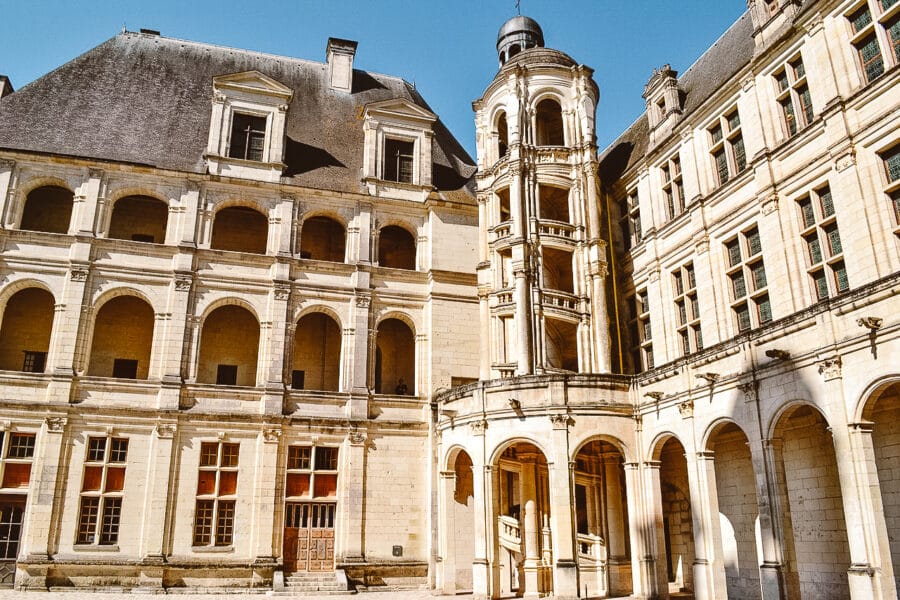
Conclusion
Château de Chambord is a magical place and a top attraction in the Loire Valley. Need some other day trip from Paris ideas? Check out more of my posts below about France.
Enjoyed this post? Here are some other popular French destinations!
Paris
- The Ultimate Guide to Planning a Trip to Paris
- Ultimate 5 Days in Paris Itinerary & Day Trip Ideas
- Top 20 Best Things to Do in Paris
- 90+ Paris Quotes to Inspire Your Next Trip
- 20 of the Prettiest Streets in Paris
Paris Day Trips
- Visiting the Palace of Versailles: First Timer’s Guide
- Day Trip from Paris: The Loire Valley
- Trip to the Loire Valley: Castles, Vineyards, Tours, and More
- Visitor’s Guide to Château de Chenonceau
- The Most Charming Cities Near Paris
South of France
- 10 Best Towns in Provence, France
- How to Spend 3 Days in Provence, France
- 10 Must-See Towns on the French Riviera
- Visitor’s Guide to Château de Chenonceau
- 3 Day Nice Itinerary & Travel Guide
- Day Trip to Monaco Itinerary and Guide
- The 8 Best Wine Regions in France
Travel Planning Resources
BOOK YOUR FLIGHT | Skyscanner is the top search engine for finding and booking flights. They price check over 1,200 travel sites to help you find the best prices.
VIEW ACCOMMODATIONS | For booking hotels and vacation rentals Booking.com is a top resource . They offer some of the cheapest rates and different payment options.
PLAN TRANSPORTATION | Discover Cars is my go-to site when booking rentals. They work with hundreds of companies worldwide to help you find the best car for your needs and budget.
SCHEDULE YOUR TOURS | There are many top companies available in Europe. Get Your Guide is one of the best sites for tours, excursions, and activities. Viator is another terrific website for all types of experiences.
GET TRAVEL INSURANCE | Having travel insurance is always a good idea. World Nomads is one of the top travel insurance companies. It will cover you if you must cancel your trip or if something unexpected happens.
Check out the resource page for additional travel planning resources.
Pin it for Later


